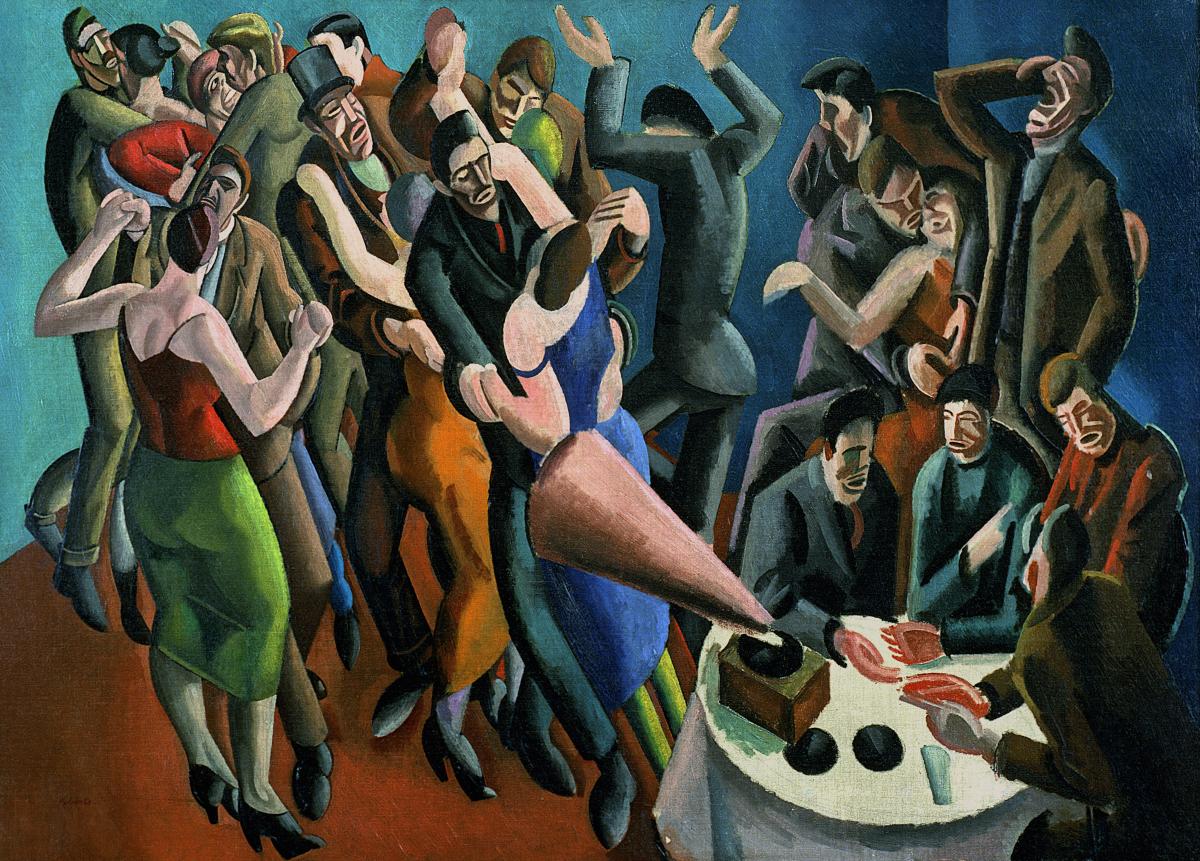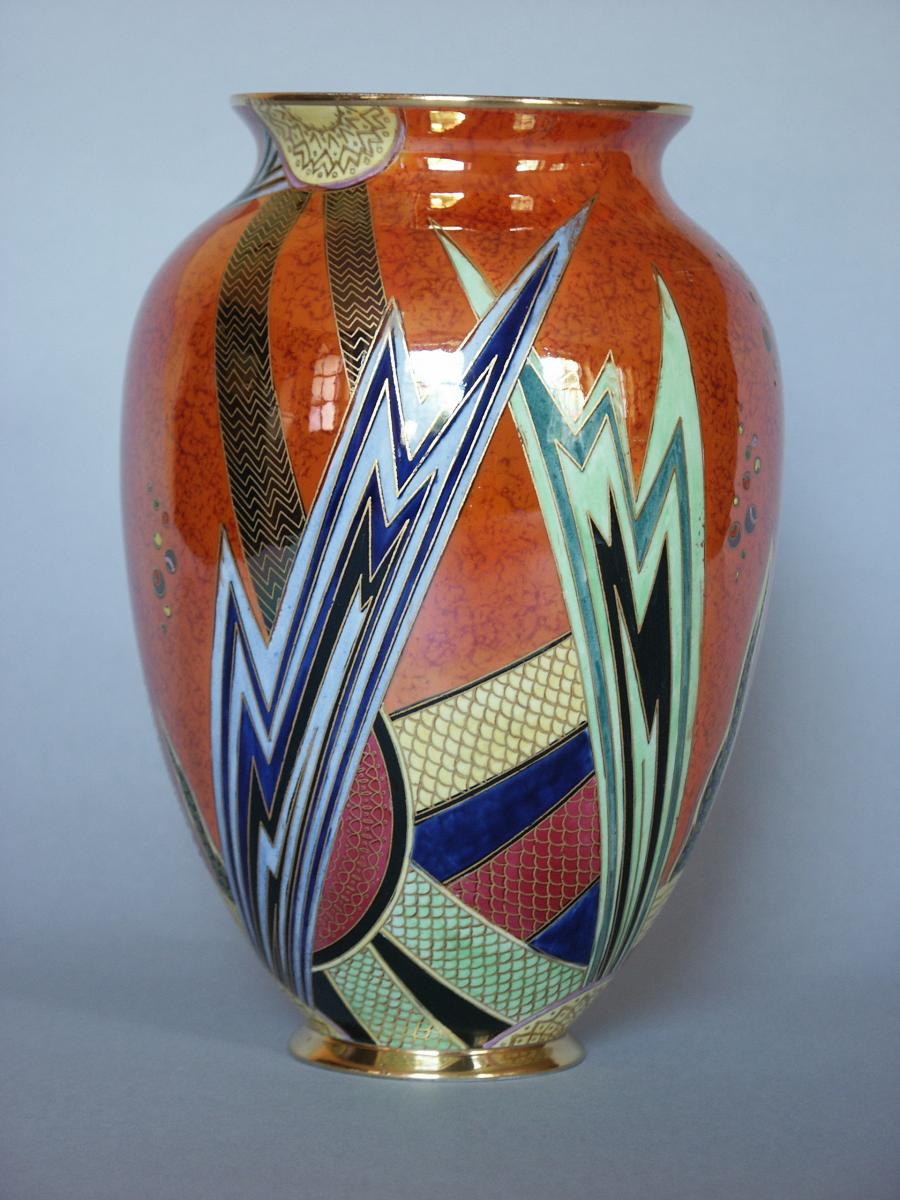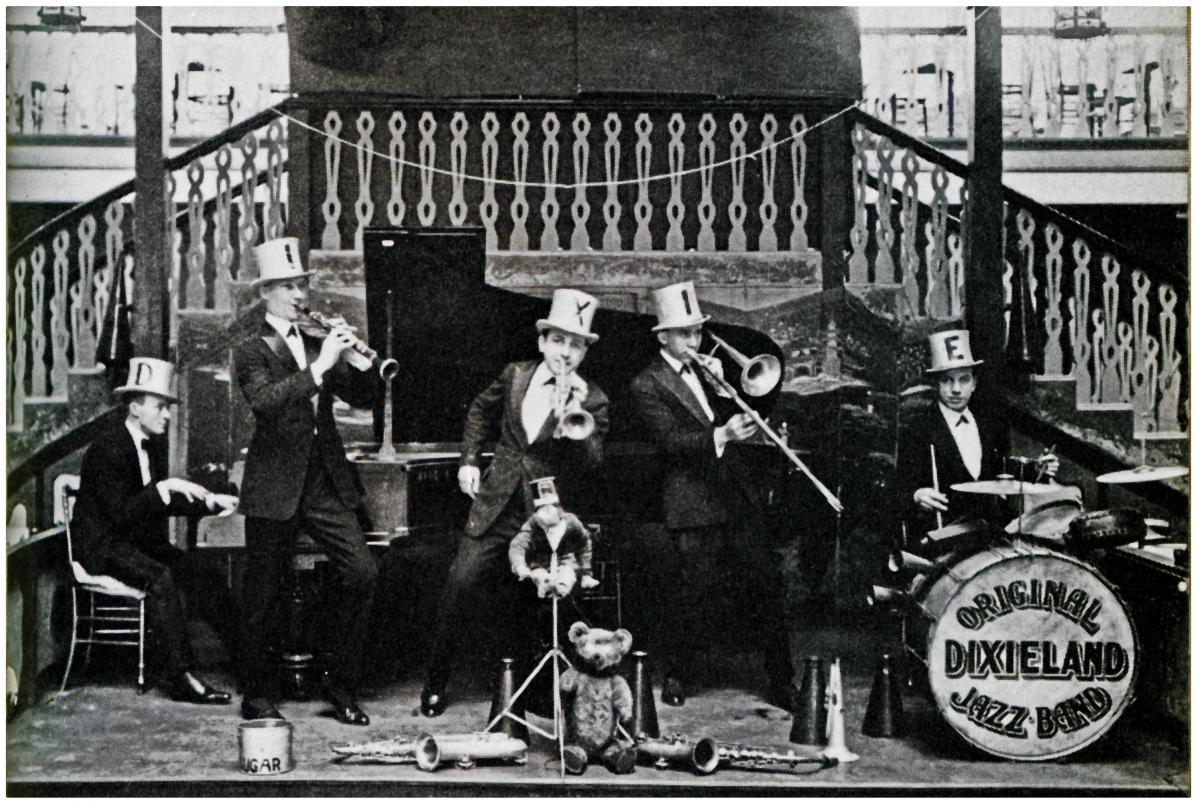This wonderful Cornish workshop and museum is dedicated to the legacy of studio pottery trailblazer Bernard Leach
Rhythm & Reaction exhibition: curator’s picks
Rhythm & Reaction exhibition: curator’s picks
22 Mar 2018
Professor Catherine Tackley, curator of The Arts Society’s spring 2018 exhibition, Rhythm & Reaction: The Age of Jazz in Britain, opens up about some of her favourite pieces.
For me, as a musicologist, Rhythm & Reaction is as much about the cultural impact of jazz, as the music itself. From paintings and ceramics to films and photographs, the pieces we have brought together reveal the impact of the art form, beyond the immediate jazz community. Its influence on dancing, record-collecting and music magazines pointed towards the future of music and popular culture. This exhibition marks the centenary of jazz arriving in Great Britain and it has been really exciting to see it all come together at Two Temple Place. Many of the pieces on display belong to private collectors rather than big museums, so have rarely been in the public eye before.
For someone like me who has been researching this period for 20 years, it’s a once-in-a-lifetime opportunity to see a collection such as this in one place. It’s very hard to pick favourite items, but here are a few that give a flavour of what lies in store for visitors.
The Dance Club (The Jazz Party)

Oil on canvas, 1923, William Patrick Roberts. Leeds Museum and Art Gallery © Estate of John David Roberts. By permission of the Treasury Solicitor, courtesy of Bridgeman Images.
Jazz revolutionised dance culture. Whether you went out dancing in a big London venue or to an amateur band in a village hall, its rhythms quickly filtered to all levels. It’s a sign of the times that there’s no band in this painting; people are dancing to the gramophone. This is one of a number of joyful dancing images in the exhibition. People no longer had to go to a ballroom or upper-class entertainment with live musicians to dance – everyone could get involved.
The seated group in the corner are probably the jazz nuts, all talking about the latest records. Rhythm clubs and record collecting quickly became popular in this period. In Britain, where contact with American jazz musicians was limited, people turned to recordings and music criticism to learn how to appreciate it and find out what was going on.
JAZZ pattern 3353 ceramic vase

1930s, Enoch Boulton for Carlton Ware. Private Collection © Terry Wise, courtesy of Terry Wise/Carlton Ware World.
The age of jazz was the age of colour. The music has a huge aesthetic impact on design. The pointed chevron motif on this vivid orange vase was often used to suggest modernity, electricity and instant communication (as with the early BBC logo), while the oriental shape reflects the contemporary interest in the Far East. Jazz was seen as exotic because of its African-American roots, and jazz-inspired designs often blurred many modern influences.
We know from the original pattern books that were used to recreate this design that it was actually called ‘Jazz’. These items were not high art for an exclusive few – they were mass-produced for Carlton Ware. They came in lots of different colours, but are all really eye-catching and fabulous.
The Original Dixieland Jazz Band at The Palais de Dance, Hammersmith 1919

Photograph, 1919, Max Jones Archive © Max Jones Archive, maxjonesarchive@aol.com
Arguably the first jazz outfit to visit Britain, the Original Dixieland Jazz Band played at the Hammersmith Palais for several months. Their New Orleans sound would have seemed as revolutionary then (as punk did to later audiences). It was still relatively unusual for a band to be pictured posing on the stage, rather than in a photographic studio, so this is a nice moment from their history.
Note the teddy bear and the toy monkey onstage with the band. The group were real showmen. Their famous record ‘Livery Stable Blues’ has the instruments imitate different animals, such as a clarinet doing a ‘cock-a-doodle-doo’. Today, we often think of jazz as very artistic, but at this point, novelty and entertainment were key, and they were often booked as variety acts.
The Palais was one of a new breed of venues, in which women could dance with a resident dance host, instead of being escorted by a male partner. It was the early days of women being able to go out together, as a group, without men – something that was really empowering.
Rhythm Vol XI, No 120

Printed magazine, September 1937, National Jazz Archive © Time Inc. (UK) Ltd, courtesy of the National Jazz Archive
One of the most prominent publications catering for the growing community of jazz lovers from the mid 1920s, Rhythm was part trade publication, part instruction guide for amateurs and part fan magazine. The cover design may link to the early jazz standard, ‘Tiger Rag’. This became a calling card for musicians – you did your own version to show off your virtuosity.
Flicking through magazines such as this shows how jazz really was the popular music of its time. People turned to magazines to understand what they were hearing. Record critics sometimes got their break by simply writing a letter to the magazine, before graduating to full articles. And they didn’t mince their words; if they thought something was rubbish, they would definitely say so!
Professor Catherine Tackley is a musicologist and head of the music department at the University of Liverpool. See Rhythm & Reaction until 22 April at Two Temple Place in London. As told to Claire Sargent for The Arts Society Magazine spring 2018.
About the Author
The Arts Society
JOIN OUR MAILING LIST
Become an instant expert!
Find out more about the arts by becoming a Supporter of The Arts Society.
For just £20 a year you will receive invitations to exclusive member events and courses, special offers and concessions, our regular newsletter and our beautiful arts magazine, full of news, views, events and artist profiles.
FIND YOUR NEAREST SOCIETY
MORE FEATURES
Ever wanted to write a crime novel? As Britain’s annual crime writing festival opens, we uncover some top leads
It’s just 10 days until the Summer Olympic Games open in Paris. To mark the moment, Simon Inglis reveals how art and design play a key part in this, the world’s most spectacular multi-sport competition



